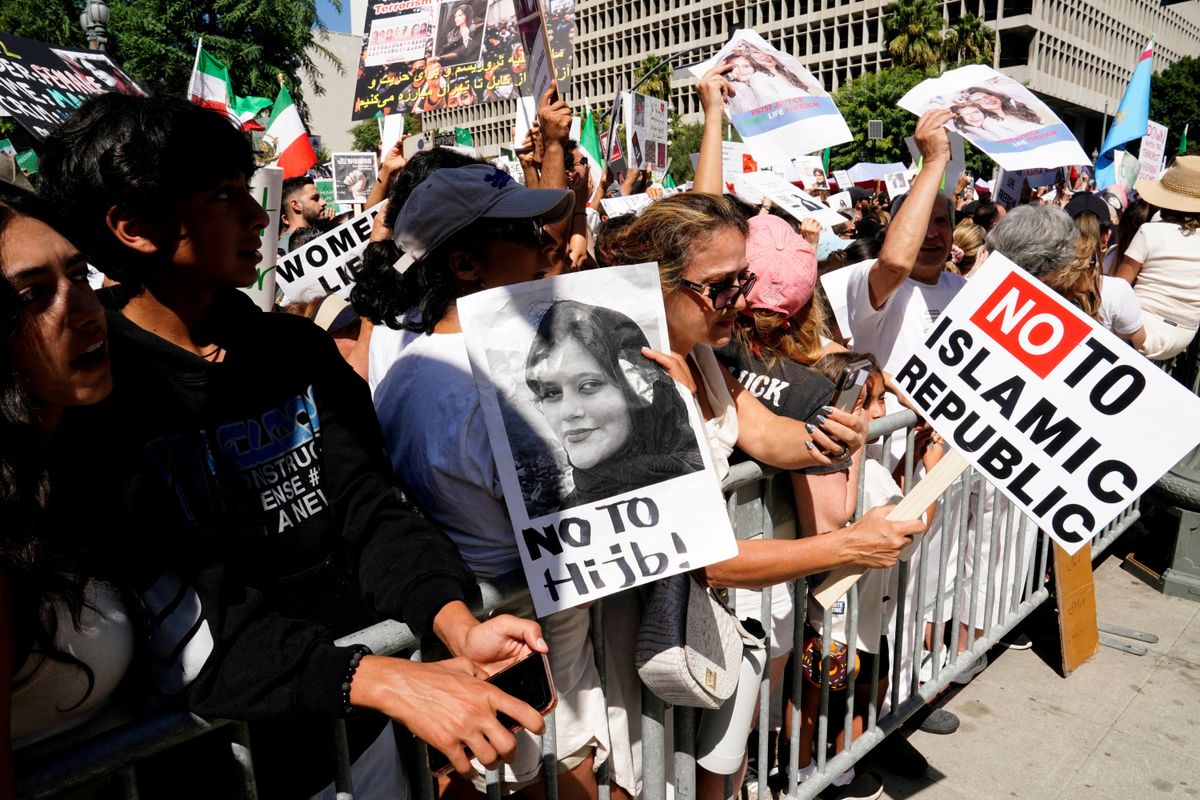This Saturday marks one year since Mahsa Amini’s death at the hands of Iran’s morality police sparked months of protests, and the authorities are taking steps to prevent another massive outbreak of unrest. They have preemptively arrested women’s rights activists, closed public spaces, and bolstered security forces in major cities. Yet public discontent continues to simmer in the Islamic Republic as ordinary people perceive a widening gulf between their hopes and concerns and the interests of the country’s clerical regime.
We asked Eurasia Group expert Gregory Brew if he thinks the authorities will be able to keep a lid on tensions in the coming days.
Do you expect Iranians to take to the streets this weekend?
Anniversaries are important in Iran, particularly those marking the passing of major political figures. The death of the 22-year-old Amini became hugely important for millions of Iranians, both in Iran and among the Iranian global diaspora, so there are bound to be demonstrations to mark the anniversary. They’re unlikely to be very large, however. The regime has been taking steps to deter new protests. Ordinary Iranians are reluctant to take to the streets since the crackdown last year, which saw security forces killing hundreds of protestors while wounding and arresting thousands more. Several high-profile trials and executions of arrested protestors hammered home the repressive message. The legacy of that crackdown will deter people from coming out in large numbers. But there’s sure to be some fireworks, both on 16 September and in subsequent days.
Did last year's protests achieve anything?
It’s true the protests were unsuccessful in forcing political change. Hardliners, led by Supreme Leader Ali Khamenei and President Ebrahim Raisi, still dominate the system. But it would be wrong to say the protests didn’t have an impact. They revealed the depths of dissatisfaction with the regime and galvanized opposition to hijab rules that require women to wear headscarves in public. So, while they may not have changed the system, the protests made it abundantly clear that ordinary Iranians are fed up with the status quo and are more willing to defy the government.
What is the status of the hijab issue today?
Hijab rules represent the government’s commitment to enforcing a strict form of Islamic law that many Iranians do not subscribe to. So, they’ve always been a source of controversy. Since the protests, the issue has been one of the most salient in Iran’s domestic politics. The government initially eased off enforcing these rules and adopted a carrot-and-stick approach: As the security forces cracked down on demonstrators, they looked the other way when it came to hijab infractions. Though this helped the government avoid more unrest, it left Iran’s hardliner leadership with a huge problem. Millions of Iranian women now see the hijab as a matter of personal choice, rather than state mandate. Non-compliance is commonplace.
Yet the government cannot permanently retreat on the hijab, a key pillar of its ideology. So, in the last few months, there has been a gradual crackdown: The morality police have returned, women are monitored for infractions, and a sweeping new hijab law is set to take effect next year. But ordinary Iranians are likely to resist this enforcement. There’s no putting the genie back in the bottle.
How will these developments affect next year’s elections?
While Iran’s political system is authoritarian, Iranian elections have historically featured high turnout and vigorous participation. That changed in 2020-2021, however, as authorities barred reformists and moderates from participating, clearing the way for hardliner dominance. The result has been a decline in participation. Most Iranians now regard the country’s elections as a sham.
Iran’s leaders want higher participation in elections, since they provide a basis for the government’s claim to legitimacy. But the authorities won’t risk allowing reformists to compete, since doing so could threaten their own position. So, the odds of a more open, permissive election are pretty low. Iranians are unlikely to return to the polls if their only options are more hardliners.
Given broad dissatisfaction and frequent bouts of unrest, is the status quo sustainable?
It’s clear that a majority of Iranians are dissatisfied – corruption, inflation, the effects of climate change, and general oppression all feed into this sentiment. The leadership isn’t capable of solving these problems. That means that it will have to rely on suppressing dissent to remain in power. That’s not sustainable.
The Islamic Republic has a vast capacity for oppression. It has proven, time and again, that it is comfortable killing its own people in large numbers. That explains why there’s been little appetite to return to the streets: Why risk injury, arrest, and possible death if the chances of political change are so small?
That said, it’s important not to lose perspective. Changes to Iran’s political system are possible, particularly in the event of a shift in leadership at the top. Khamenei’s death, which could happen at any time, will lead to a succession crisis that could create space for changes, and possibly reforms, within the system. The Islamic Republic appears resilient, but there are numerous cracks in the façade. And just as the regime has shown its resilience, so too have the Iranian people illustrated a tenacious interest in securing greater freedoms. That’s a struggle that will persist long after the anniversary of Amini’s death.
Edited by Jonathan House, Senior Editor at Eurasia Group.






